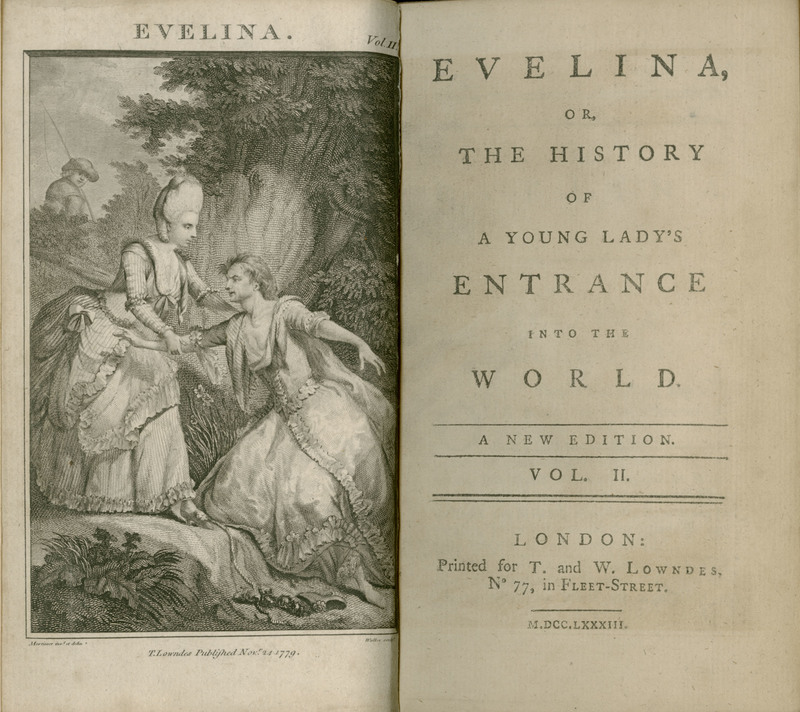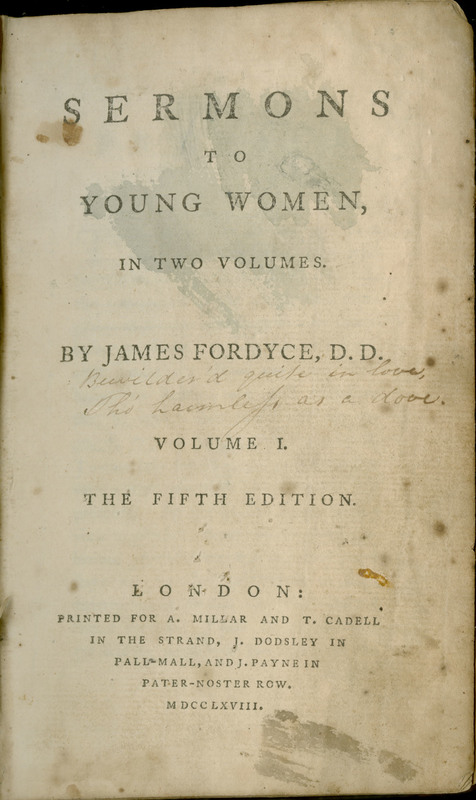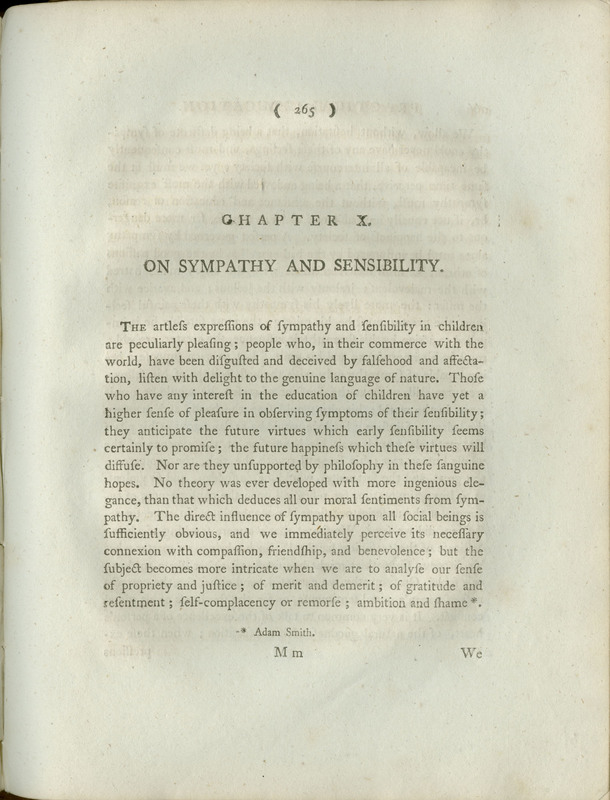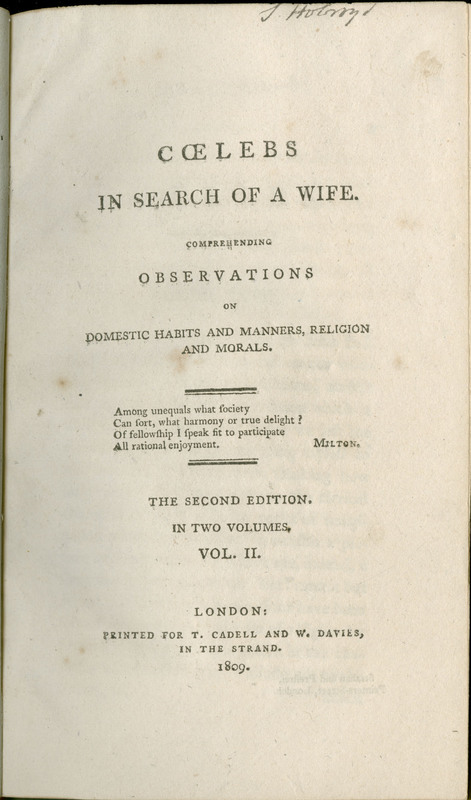Education and Conduct
A Father’s Legacy to His Daughters is a conduct book written by Dr. John Gregory following the death of his wife in 1761. Not originally meant for publication, Gregory sought to record his wife’s opinion on young ladies’ conduct and intended the book to be presented to his daughters after his death. However, his son published the book in 1774 after Gregory’s death, and it was hugely successful. This popularity led to many editions and translations, including this particular edition from 1823. Gregory discusses religion, amusement, friendship, love and marriage, and, of course, his views on proper conduct. He asserts that women should be modest, delicate, cautious, and hide their wit. Overall, this conduct book represents eighteenth-century society’s cultural values and social pressures faced by women--ideas that Jane Austen incorporated into her novels.
A noticeable feature of this edition is its miniature size--referred to as “pocket-sized.” In the nineteenth century, printing costs were unavoidable pressures to publishers, especially due to a tax on paper in 1819. Consequently, publishers shrunk their book sizes so they could afford material costs. Minimizing the book size influenced the reading experience. By closely handling and reading the book, an intimate relationship was created between the reader and the text. Moreover, pocket-sized books made texts easily accessible--enabling on-demand access to literature that the reader thought was important, such as this conduct book.
(Victoria Bortfeld, Meryn Campbell, Elizabeth Wood)
Initially conceived as a series of separate sermons preached to his congregation, Reverend James Fordyce's Sermons to Young Women, published in 1766, is a two-volume printed collection of the same sermons. As with other conduct books of the time, Sermons concerns itself with the definition and development of character, specifically—as the title clearly indicates—that of young women. With each chapter or sermon centralized around a specific topic, Fordyce ministers on such subjects as modesty, reserve, friendship, piety and meekness, as argued upon tenets of Christian doctrine. Sermons went on to see six editions in its first year of printing, making it an enormous success for the time. By the mid-1760s, Fordyce had become one of the most popular ministers in London. Less than a decade later, however, Fordyce's views on the role of women in society had begun to fall out of general favor; and by the end of the eighteenth century, such notions were considered as being nothing short of quaint. This decrease in popularity is evident in Jane Austen’s novels as she often alludes to conduct literature with a skeptical eye as many of her characters break these rules.
(Sarah Banister, Jesse Kim, Joshua Wirgau)
Maria Edgeworth was the author of many books that spanned multiple genres, published shortly before Jane Austen’s literary career. Edgeworth’s most famous novels include Belinda, Helen, and Castle Rackrent. Austen looked up to Edgeworth for her work on advancing the novel as a genre and referenced her in her own novels, such as Northanger Abbey. Practical Education was a joint project between Maria Edgeworth and her father, Richard Lovell Edgeworth. This unique conduct book included topics typical to the genre, such as how young ladies should conduct themselves, in addition to actual schooling techniques. While Maria wrote the chapters on subjects aimed towards young ladies, her father wrote the chapters concerning schooling lessons--and they were more often than not addressed specifically to boys. This reflects what we know of society at the time--Maria’s father had the knowledge to teach the more “scholarly” subjects to the boys, while Maria used her mother’s notes for the chapters related to more “feminine” topics.
(Miranda Hency, Alexandra Paradowski)
Hannah More’s Coelebs in Search of a Wife is a hybrid, both a novel and a conduct book that narrates the life of a young bachelor while simultaneously serving an instructional purpose. Given that the novel was not yet an established and respected mode of writing during More’s lifetime, as well as her dedication to spreading Evangelical moralist teachings, it is not surprising that Coelebs is the only novel she wrote. Despite it being her only novel, it was wildly successful, receiving praise from religious groups (which made up a large contingent of England’s early reading populace) that commended the novel’s advocacy of Christian values.The success of Coelebs played a pivotal role in elevating the novel’s status to a legitimate medium of high literature, setting the stage for Austen’s impending success. However, More prefered writing plays, poems, and essays, as is evident in her homage to John Milton; his verse not only appears on the front page of Coelebs, but is referenced throughout.
More’s writings were known to Austen and held a presence in her work, most notably in Austen’s Mansfield Park. More’s stylistic usage of satiric characterization and melodrama, and the themes of the ideal match and the importance of intellect and character in selecting a partner, were adapted by Austen.
(Anthony Okaneme, Sarah Shim)

Novels and Plays

Fashion and Design





